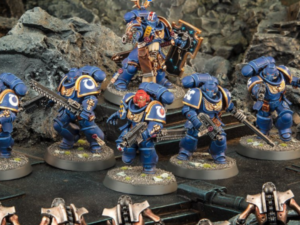Winning at fantasy football isn’t an easy thing to do, especially if you’re playing against opponents who know their stuff. Claiming victory involves several factors, from smart roster management to a healthy dose of luck, but few things in fantasy football matter quite as much as how your team gets its start.
Your fantasy football draft sets the tone for the entire season. On the day of the draft, the power dynamics and trade partners that will come into play later in the season are established over the course of mere hours. If you don’t draft well, you’re going to have a hard time climbing out of the hole that you’ve dug for yourself.
In short, you need to draft well this year if you want to have a prayer of winning.
Draft by position or pick the best player available
Whether you should focus on filling out your roster by position or just grab the best player available, is the question on all fantasy footballers’ minds. The truth is somewhere between the two extremes, but it’s likely closer to the “best player available” side of the equation. Particularly early in the draft, you shouldn’t let worries about positions keep you from drafting studs.
When you reach a point where you may have trouble finding a starting spot for players in certain positions, it becomes time to diversify. You shouldn’t turn down values on players who drop, but you can start thinking about making sure that you have a good enough player at each position.
Still, you need to think about how better the best player available is than the player who fills a positional need and, even more importantly, you need to think about what you’re giving up by waiting another round to fill a position. This is where tier lists come in.
Understanding tier lists

When you head to the draft, you should have player rankings that show where players land within their position and within the league as a whole. These are vital lists, but they’re missing a very important dimension. If you’ve been picking the best players available and find that you need to fill a couple of remaining positions before your good options are done, it’s critical to know how the remaining players measure up to their peers.
Maybe the quarterback is only slightly better than the next couple of quarterbacks on your ranking sheet, and while the tight end is significantly higher in the overall rankings than the next-best guy on the position-specific tight end rankings, you’d still want to take the tight end. You’d be okay waiting until your next pick to grab a quarterback, assuming you don’t think more than two or three are coming off the board before your next pick.
This situation is one of many that allow you to have a tier list and know how to use it. Tier lists rank players by position, but — crucially — they also establish “tiers.” The top three players at a position may be in the top tier, followed by two more in the second tier and so on. When there’s a drop-off in tiers, there’s a more significant drop-off in value than there is between players ranked in that tier. Try to grab players in the highest tiers and remember that it’s acceptable to hold off drafting a position if it’s clear that you’ll still get a chance at that same tier with your next pick. An understanding of tier lists will make you a far more economical drafter.
Stay up to date on injuries
Your draft research will focus on rankings, tier lists, and perhaps some sleeper tips. This will give you plenty of know-how for draft day. Don’t forget to stay on top of the latest details. NFL players can get injured in training camp, and there’s nothing worse that drafting an injured player.
You’ll need to stay on top of football news during the season, so start early. Make sure that you know the latest details that could change your rankings and tier lists mere hours before the draft. Fantasy football is all about knowing your stuff, so stay informed. If you do, you’ll draft well and get off to a great start this year.







